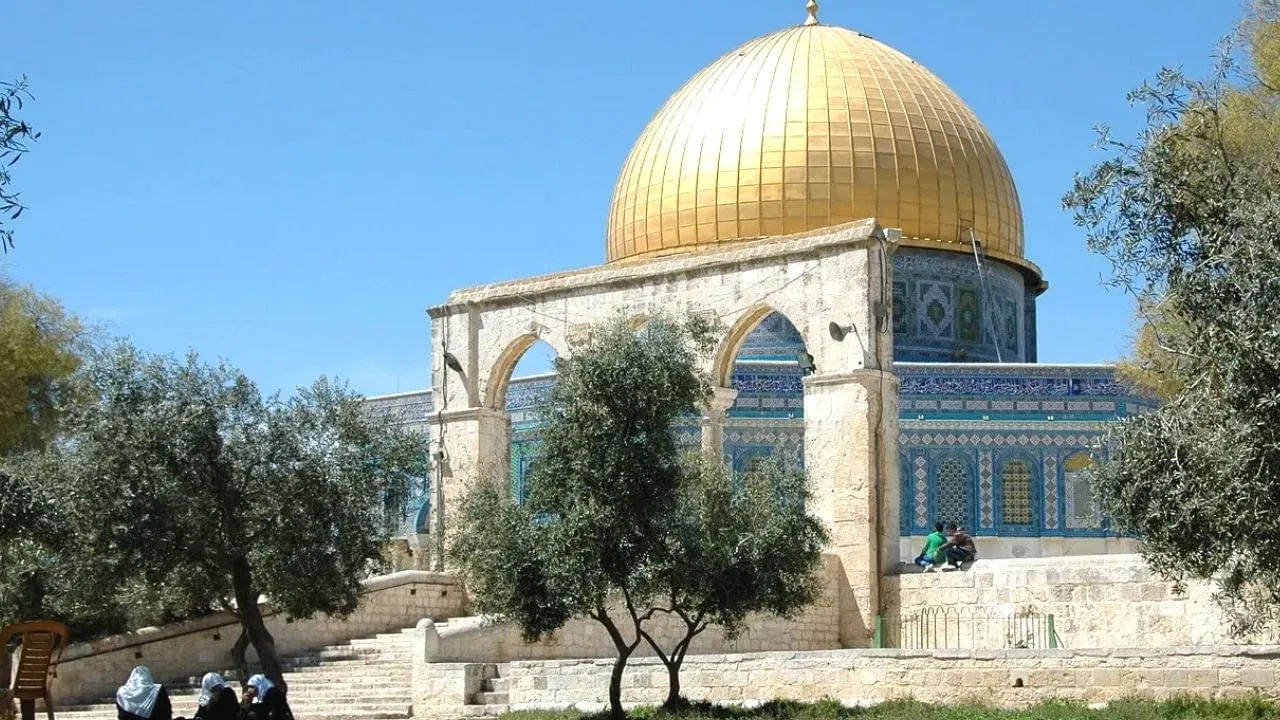[ad_1]
The battle between Israel and Hamas continues to debate who actually owns Jerusalem. Both the parties have their own claims regarding this part but very few people would know that Jerusalem is also related to Punjab. Sufi saint Baba Farid arrived here about 800 years ago and even today there is a place called Indian Hospice. After spending many years here, he moved to Punjab and died there.
There is still a building in the middle of Jerusalem and it contains the room where Baba Farid used to meditate. He meditated continuously for about 40 days. 1173 Born in the small village of Kothewal near Multan around 1800 BCE, Farid al-Din Mas’ud came from a family that once held an important position in Kabul. But they migrated to Punjab generations ago due to fear of rising violence.
Early poets of Punjabi language
Baba Farid received his early Islamic education at a madrassa attached to a mosque in Multan, where he became proficient in Arabic and Persian. But Farid was one of the first to use the local language of Punjab to spread his message, which made it spread further than the messages of his predecessors. As a result, he is considered one of the earliest poets of the Punjabi language.
After traveling through Punjab and beyond to spread their message and settle in the city of Ajodhan (now Pakpattan), they reached the city of Jerusalem. It is also said that he spent some of his time here writing his new poems, which later became the basis of Punjabi poetry for centuries.
Dharamshala and Lodge
Soon after Baba Farid’s departure, the place quickly turned into a place of worship and accommodation for all travelers entering Jerusalem from South Asia. The lodge is now locally known by two names. Zawiya al-Faridiya (Lodge of Farid) and Zawiya al-Hindiya (Lodge of Hind).
Related stories
Like its two popular names, there are two stories that tell how this change in union came about. One story emphasizes how the Chishti sect of Sufism, to which Baba Farid belonged, eventually bought it in the name of the saint.
The second describes how the then Ayyubid authorities in Jerusalem recognized the saint’s spiritual status and decided to give zawiya to Baba Farid or some of his disciples (who later came to the city) in this regard. The region saw a lot of political upheaval over the centuries, but the lodge seems to have managed to survive it all.
Witness the march of the Ottomans
It followed the various crusades initiated by the Europeans, the advance of the Mongol cavalry to their final destruction on the plains of Ain Jalut at the hands of the Mamluks, and the subsequent march of the Ottomans, who finally defeated the Mamluks. After this, Palestine remained under Ottoman rule for centuries.
Despite all the conflict and turmoil, the local lodge managed to stand despite being in a dilapidated state. Not much information exists about the sheikhs and chiefs of the lodge during the intervening centuries, but some documents from the Ottoman era specifically point to the lodge’s connection with the Punjab.
Disputes about the leadership of the lodge
A document from 1681 details a dispute over the leadership of the lodge between a Muslim carrying the Nisbah al-Hindi and a Muslim from Multan in southern Punjab. Another document belonging to the same source refers to another Muslim from the Punjab, such as a sheikh named Ghulam Muhammad al-Lahouri, who is credited with engaging with the Ottoman administration and successfully transferring the estates in 1824. goes As a result seven original lodge rooms, two water tanks and a courtyard were added.
Places under the shaykhs seem to have gained prominence and stability during the centuries of Ottoman rule, but a major turning point in the story came when the Ottoman Empire finally surrendered in 1919. In 1921, Amin al-Husseini undertook major reconstruction projects and renovations to bring Jerusalem once again to the center of the Muslim world.
To raise funds for these projects, he sent emissaries around the world to Muslim patrons, many of whom were Muslim rulers of princely states in British India.
Existence of ‘Indian Lodge’
During this visit, the emissaries from Jerusalem informed the leaders of the Indian Khilafat movement about the existence of the ‘Indian Lodge’, which was in a dilapidated condition and in dire need of a qualified Indian to look after it. This Indian lodge was originally Farid’s residence and Indian Muslim leaders chose a young man from Saharanpur, Uttar Pradesh, named Khwaja Nazir Hasan Ansari, to breathe new life into it. Now this lodge came under the Ansari family of Uttar Pradesh.
Input: Daya Krishna Chauhan
[ad_2]
